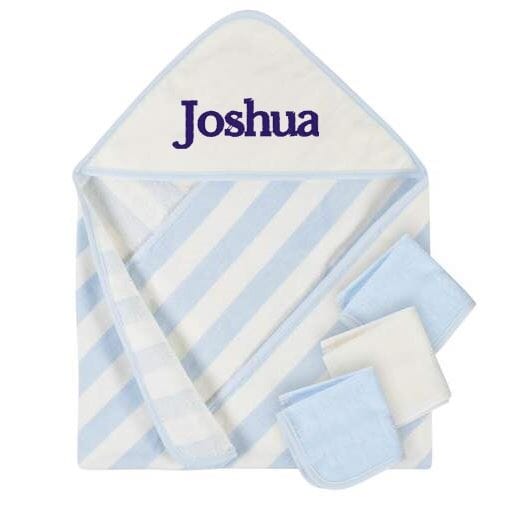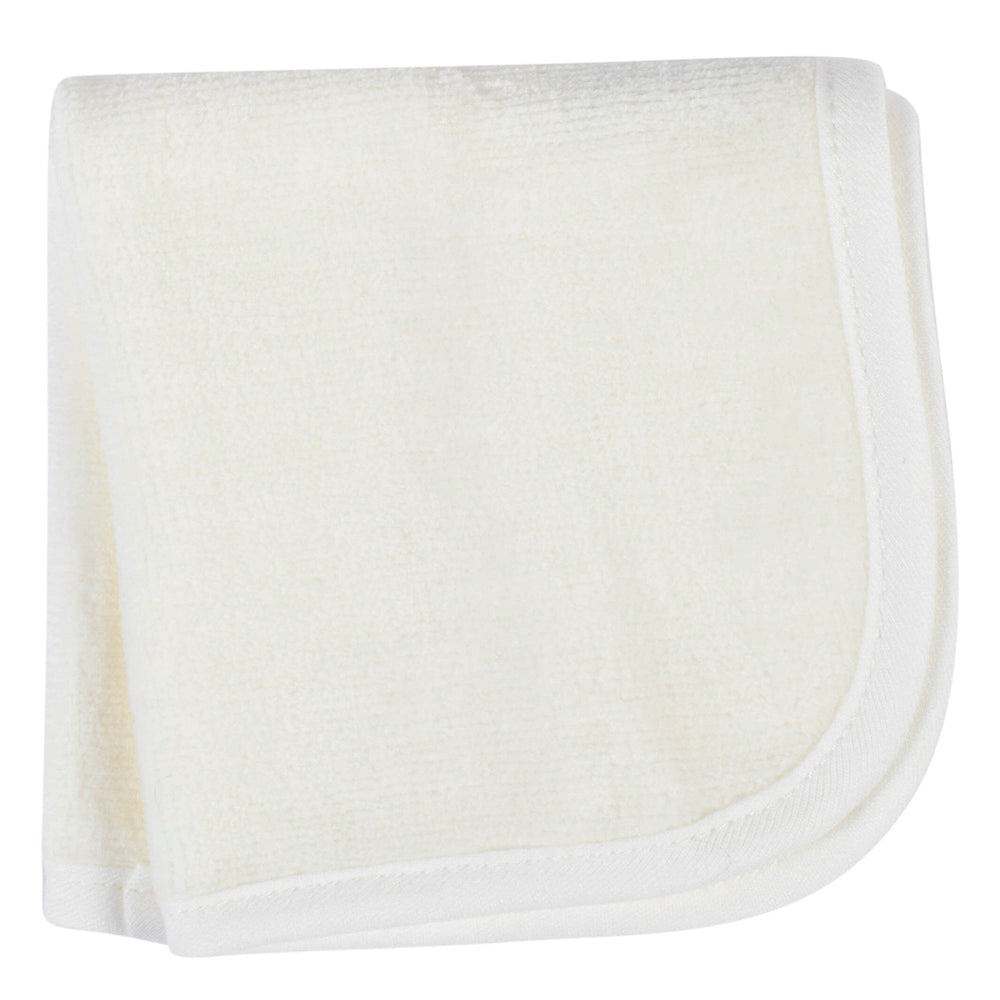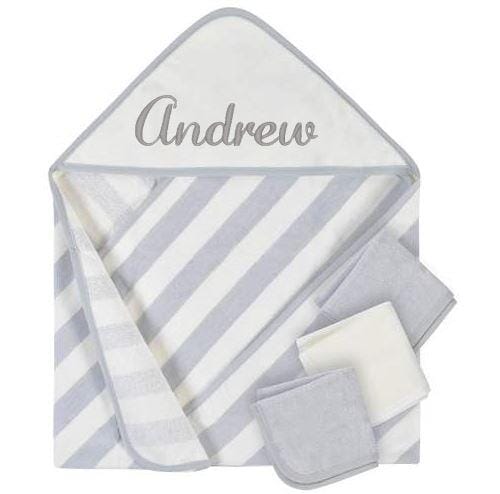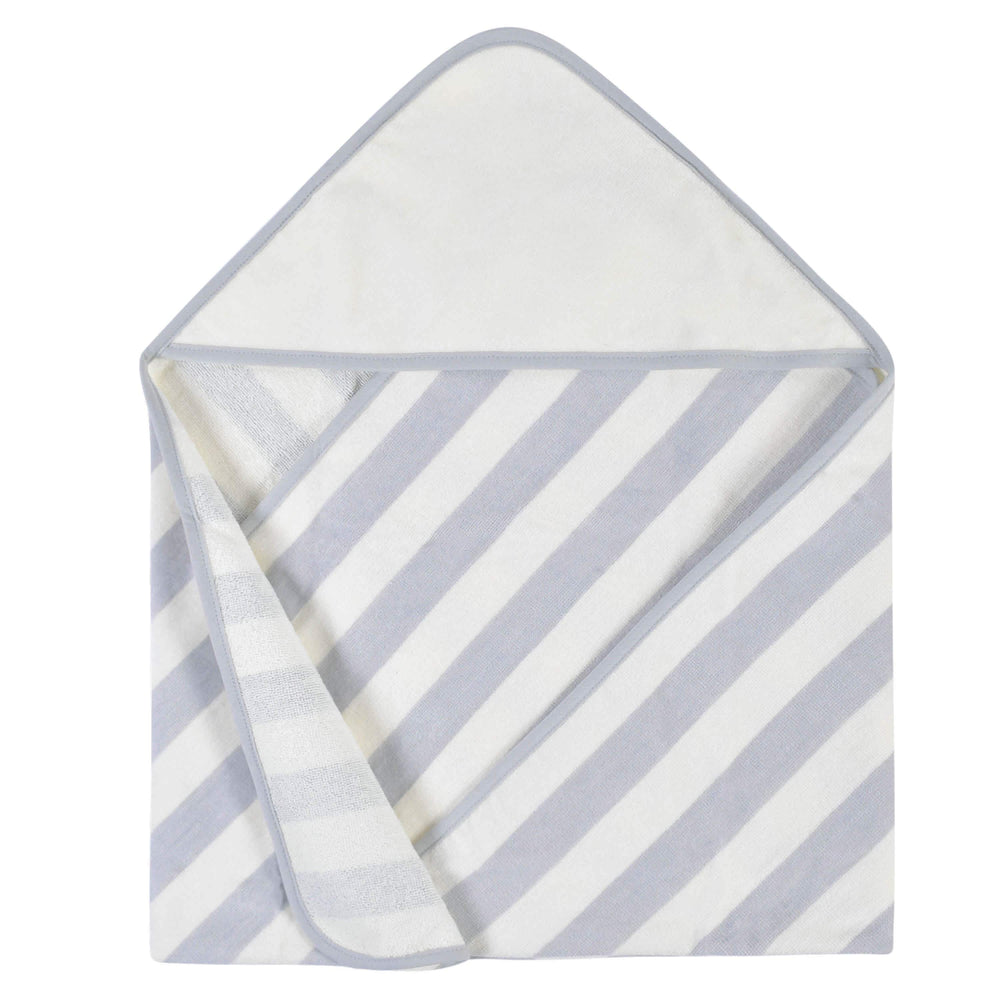Bath Basics: A New Parents’ Guide on How to Bathe a Baby
As a new parent, you’re probably beginning to realize that many baby-related tasks aren’t nearly as simple and straightforward as you originally thought or hoped they would be. The same can hold true for baby bath time.
Giving your baby a bath can be a wonderful bonding experience, and it’s also essential to your baby’s health and happiness. Keeping your little one clean helps fend off bacteria and protect their delicate immune system in the first few weeks and months of their life.
But even when you go in with a game plan for baby bath time, you might find that you need to change course when your baby just isn’t having any of it. As frustrating as this can be, it’s also perfectly normal.
So, how can you master the art of giving your baby a bath and turn it into a lovely bonding experience for the both of you? Here is a simple guide to help you navigate bath time with the ease and confidence of an experienced parent.
Note: Bathing your baby is an important part of their care. Make sure to consult with a healthcare professional to ensure you are providing the best care for your little one.
Baby's First Bath: Why Wait?
After bringing home your new baby, you may be eager to give them their first cleaning, but there are good reasons to delay your baby's first bath. Recent research suggests that waiting 24-48 hours to wash newborns provides several important benefits.

- Temperature Regulation: Newborns struggle to regulate their body temperature. Bathing too soon after birth can cause dangerous temperature drops.
- Skin Protection: Babies are born covered in vernix caseosa, a natural protective coating that moisturizes their skin and provides antimicrobial properties. This will naturally absorb into your baby's skin within a day or two if given time.
- Breastfeeding Success: Studies show that delaying the first bath can improve breastfeeding rates, as babies remain closer to mom during those critical first hours.
Given that most newborns don’t get too dirty, some parents will wait between 10 days and three weeks to give their first sponge bath (no regular baths until the umbilical cord has healed). If you still aren’t sure, be sure to ask your doctor how long they recommend waiting.
How Often Should a Newborn Have a Bath?

If you've asked all your friends how often a newborn should have a bath, you've probably received a lot of different answers. Some might say every day, while others say to bathe them only twice a week.
So, what's the real answer? The American Academy of Pediatrics recommends that newborns be bathed just 2-3 times per week during the first year. Most doctors recommend washing your baby no more than 2-3 times a week to avoid drying out your little one's delicate skin. Daily bathing can strip your baby's sensitive skin of natural oils, potentially leading to dryness and irritation.
However, there are exceptions. Babies get dirty eventually, whether it's from a diaper blowout, spit up or vomit. There will be some instances where you just washed your baby the day before and think, "Yep, this baby definitely needs a bath!"
Apart from the random messy incident, when is it acceptable to wash your baby more than 2-3 times per week? Here are a few other exceptions to the rule:
- Saving soap for deep cleans. It’s acceptable to wash your baby every day as long as you don’t use soap each time. Even baby-safe soaps are formulated to clean the skin and can lead to excessive drying if you aren’t careful.
- Using moisturizer after bath time. If you’re worried about your baby’s skin becoming too dry, you can also apply a fragrance-free hypoallergenic moisturizer all over their skin (being sure to take care around the eyes and mouth, of course).
- Trying to calm colic babies. Your baby is crying for hours on end and the only thing that seems to help is bath time. Although you certainly don’t want to wash your baby more than necessary, there are some things that are worth doing for your sanity. As long as you skip the soap and moisturize your baby after bath time, bathing them each day is perfectly fine.
Focus on keeping specific areas clean between baths: face (especially after feedings), neck folds where milk can accumulate, diaper area, and hands.
Can My Baby Have a Bath Before the Umbilical Cord Falls Off?
One of the most common questions new parents have is whether they can fully immerse their newborn in water before the umbilical cord stump falls off. The short answer is: it's best to wait.
Until the umbilical cord stump dries and falls off (typically within 1-3 weeks after birth), it's recommended to give your baby sponge baths rather than immersion baths. The umbilical area needs to stay clean and dry to prevent infection and promote healing.
Once the cord stump falls off and the area is healed (usually appearing as a small belly button with no redness or drainage), you can begin regular tub baths.
How to Give a Baby a Sponge Bath
Until your baby's umbilical cord falls off, sponge baths are the safest method for keeping your little one clean. Here's a step-by-step guide:
What You'll Need:
- Warm Room (75-80°F)
- Flat, comfortable surface
- Bowl of warm water (about 100°F)
- Baby washcloths and mild baby soap
- Hooded towel
- Clean diaper and clothes
Step-by-Step Process
- Prepare Your Space - Gather all supplies before starting and ensure the room is warm and draft-free
- Keep Baby Warm - Keep baby wrapped in a towel, exposing only the parts you're washing
- Start with the Face - Use plain water (no soap) to gently wipe each eye from the inner corner outward
- Clean the Body - Add a small amount of mild baby soap to the water and wash neck, arms, chest and legs
- Clean Diaper Area Last - Use a fresh portion of washcloth and make sure to clean from front to back for girls
- Carefully Clean Around Umbilical Cord - Clean around (not on) the base of the cord and pat and dry thoroughly
- Dry and Dress - Pat baby dry with a hooded towel and dress immediately to prevent heat loss
What Do I Need for Baby Bath Time?
Before you can give your baby a bath, you should first have everything you need for bath time ready to go. Here are some basic bath items that are essential to a happy, joyous bath time for boys and girls:
 |
 |
 |
 |
How to Bathe Your Baby Like a Pro
If you’re feeling nervous about washing your baby for the first time, that’s normal for a new parent.

Rest assured that the process is much easier than you think. Although the following steps may seem overwhelming, they will soon become second nature to you as you get the hang of baby bath time:
- Check the water temperature. Always check the water temperature before bathing your little one. You can do this by dipping your elbow in the water or by purchasing a bath thermometer (between 90 and 100 degrees Fahrenheit).
- Gently place your baby in the tub. As you lower your baby into the tub, be sure to support their head and neck. With one arm supporting the head and neck, use your other arm to gently bathe them.
- Use cotton pads to wipe their eyes. Gently swipe a damp cotton pad across your baby’s eyes. Use a different cotton pad for each eye to avoid spreading a possible infection.
- Use a washcloth for their head and neck. Use a baby washcloth to clean the neck, head and behind the ears. Don’t forget the creases and rolls!
- Rinse off the cleanser. Using a small cup of water, carefully pour water to remove all soap residue from your baby’s skin.
- Remove them from the tub. Pick your baby up from underneath their arms, making sure that their head is supported. Place them on a flat surface and gently pat them dry.
- Apply moisturizer. Before getting them dressed, slather a baby-safe moisturizer all over their skin to prevent dryness.
Bath Time for Girls and Boys
There isn’t a huge difference in bath time for boys versus bath time for girls. However, you do need to be aware of a few anatomical differences that will affect your bathing technique.

Bath time for boys: Gently wash the penis with a baby washcloth and pat dry. Avoid pulling back the foreskin on uncircumcised boys. If your baby has been circumcised, try to wait until it has healed for your baby's first bath.
Bath time for girls: You can use a cotton pad, water and gentle soap to wipe your baby girl’s genitals. Just take care to scrub the vulva only, not the vagina. To keep this area as clean as possible, always wipe front to back in the tub and when changing her diaper.
What if My Baby Pees or Poops in the Tub?
It’s very common for babies to pee and poop in the tub. If it happens, don’t sweat it. Just drain the water if your little one poops.
Pee is sterile, so you can keep going and just be careful not to get any water in their mouth. If your baby is pooping in the tub regularly, there are a few tricks to work around this.
First, you can wait until they’ve had a bowel movement before giving them a bath. If this is inconvenient, you can always try giving your baby food immediately after a bath so that they associate it with positive things.
Tips for Making Baby Bath Time Fun
Some babies love water, while other babies will cry and squirm. When your baby dislikes bath time, it can make the entire process much more stressful.

Here are a few tips to help ease your little one into it and make bath time more enjoyable for both of you:
- Make sure both the room and the water are warm enough. Fussy babies may just be too cold. Some new parents find that increasing the water temperature ever so slightly and keeping their bathroom warm can help make their little one content during bath time.
- Start with a top and tail bath. A top and tail bath simply means washing your baby’s face, neck and bottom regularly. It’s a great way to introduce bath time to a reluctant baby.
- Bathe with your baby. If you’re confident enough and the umbilical cord is finally off, feel free to try bathing with your baby. It can be a great bonding experience for the two of you because it provides an opportunity for skin-to-skin contact.
- Play with bath items. Excite your baby’s senses by using baby washcloths and bath towels in various textures. Place a washcloth over the belly to keep their belly warm while making them feel comforted.
- Give your baby a massage. Babies love being touched! A bath massage will help relax them while they’re in the tub and potentially help them fall asleep after the bath is over.
- Talk with your baby. It’s difficult to be a new parent, especially if your partner has gone back to work and you’re home alone. Why not talk to your baby? Not only is it cathartic for you to chat about your day, your baby will enjoy hearing your voice.
- Morning or night. Some babies get excited in water, while others may start feeling relaxed and sleepy in the tub. You can make bath time work in your favor by giving them a bath to wake them up or put them to sleep.
Troubleshooting Common Bath Time Challenges
Even with the best preparation, you may encounter some challenges. Here are solutions to common issues:
My Baby Cries During Bath Time
- Try a shallower bath with less water
- Ensure the room and water are warm enough
- Place a warm, wet washcloth on baby's chest during the bath
- Try bathing together with baby
My Baby Has Dry Skin After Baths
- Remember that a newborn should be bathed just 2-3 times weekly
- Use less skin or soap occasionally
- Apply a fragrance-free, hypoallergenic moisturizer immediately after the bath
- Make sure to use a 100% cotton washcloth
Additional Safety Considerations for Baby Bath Time
You no doubt want to make bath time for your baby as safe and enjoyable as possible. To do this, consider taking the following safety precautions:
- Lower your water heater temperature. Be sure to avoid accidentally scalding your baby with water that is too hot. Set your water heater to 120 degrees Fahrenheit so that the water isn’t dangerously hot.
- Buy a non-skid mat. Place a non-skid mat by the bathtub to prevent slipping. Even if you aren’t bathing with your newborn, they will eventually transition to the tub anyway.
- Learn child CPR. It never hurts to learn child CPR. Children can drown in as little as 1 inch of water. On a similar note, keep the toilet lid and shower doors shut when not in use.
- Never leave your baby alone. Never walk away while your baby is in the tub or on a flat counter, even for a second. Place the baby in a safe and secure bassinet before emptying the bath water.
- Cover the tub spout. Nothing ruins bath time like a painful bonk to the head. Bath spouts can be sharp enough to make your baby’s head bleed, so be sure to cover the tub spout and any other sharp objects such as protruding shower doors.
- Keep electric appliances away from the tub. Store electronics away so that a baby or toddler can’t grab them and pull them near the tub.
Cherishing Bath Time with Your Baby

Baby bath time is more than just washing your baby and keeping them clean. It’s also a crucial time for bonding with your baby and helping them develop their growing minds.
While it may feel stressful at first, bath time will soon evolve into a fun experience for the both of you. Not only will your precious little one be clean and healthy, but they’ll be also a much happier baby who has a stronger connection with you.































